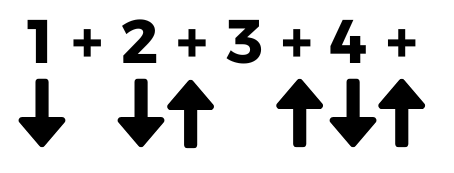How to Fix Sloppy Strumming and Improve Your Timing (with a Metronome)
Ever feel like your strumming sounds… just a little off?
Maybe you start confidently, only to drift out of time without realizing. Or perhaps you unintentionally speed up halfway through a song.
If that’s ever happened to you, you’re not alone. Many guitarists can play the chords and know the shapes, but they struggle with rhythm and groove. The good news? There’s a simple, often-overlooked solution right at your fingertips.
Meet Your Best Practice Buddy: The Metronome
Think of the metronome as training wheels for your rhythm. It’s there to help you balance your strumming until it becomes second nature.
I use metronome exercises with almost every student I teach—because it works. Whether you’re learning a new song or tightening up your strumming, the metronome helps you develop what I call timing trust—the inner sense of the beat that gives you flow, confidence, and musical feel.
When to Use (and NOT Use) a Metronome
✅ Use a Metronome When:
-
You’re learning a new chord progression
-
You’re building strumming consistency
-
You’re working on scales or riffs
-
You want to improve timing and accuracy
Think of it like a rhythm gym: you’re training your internal clock to keep time.
❌ Skip the Metronome When:
-
You’re still figuring out chord shapes
-
You’re experimenting with dynamics or feel
-
You’re exploring your own creativity
-
You just want to noodle freely
There’s a time for structure, and a time for freedom. Use both to grow.
4 Simple Metronome Exercises to Lock in Your Groove
Here are four go-to exercises I use to help students go from “a bit off” to “rock solid.”
🎯 Exercise 1: Count the Beat
Start at 60 BPM. Just listen and count:
One, two, three, four.
Repeat for a few cycles.
Then add the “and” between each count:
One and two and three and four and
This builds your internal rhythm framework. Everything in music lives inside this pulse.
🔁 Do this for 2 minutes. Feel the beat before you play it.
✋ Exercise 2: Tap the Beat
Tap lightly on your guitar’s body with your strumming hand in time with the beat.
This helps you link physical movement to the pulse. You’re not just hearing it—you’re embodying it.
🔁 Do this for 2 minutes using just the metronome and your hand.
🎸 Exercise 3: Chord Changes on the Click
Set your metronome to 60 BPM. Use G – C – D – Em.




Play one chord every four beats:
-
G (4 beats)
-
C (4 beats)
-
D (4 beats)
-
Em (4 beats)
Loop the progression.
This helps your fretting and strumming hands sync to the beat, reducing rushed or sloppy transitions.
🔁 Loop this for 2 minutes. Once you’re confident, bump it up to 70 BPM.
👉 Not ready for all four chords? Just switch between G and C.
👋 Exercise 4: Down-Strums with Rhythm
Mute your strings with your fretting hand. At 70 BPM, play 4 simple down-strums, one per beat.
This isolates your strumming hand and builds solid timing.
🎤 Bonus Tip: If you can talk or sing over the strums without drifting offbeat, you’re golden.
🔁 Exercise 5: Full Practice Loop
Bring it all together.
-
Metronome: 80 BPM
-
Chords: G – C – D – Em
-
Play: Down-strums on every beat
-
Change chord every four beats
This simulates a real song. It’s great for building endurance and smooth transitions.
🔁 Play for 2 minutes. Clean and steady is more important than fast and messy.
➕ Once you’ve nailed it, try 90 BPM.
BONUS: Lock in a Real Strumming Pattern
Here’s a classic rhythm:
Down – Down – Up – Up – Down – Up
Breakdown:

Mute your strings, and try this with the metronome at 70 BPM.
Say it out loud while playing if needed. This really locks in the pattern.
🔁 Do this for 2 minutes. Repeat it until you don’t have to think about it.
Why This Works: Building Timing Trust
These exercises do more than train your hands—they build trust in your own sense of timing. You stop guessing. You start feeling the beat.
I remember when I used to get frustrated trying to play fast riffs or chord changes. I couldn’t match the speed of the song, so I’d give up. Then a friend showed me the trick: slow it down with a metronome. Repeat. Speed up gradually.
That simple change completely transformed my playing.
🎧 Once rhythm becomes automatic, everything else—speed, feel, expression—falls into place.
Ready to Level Up?
In this next lesson I show you 5 strumming techniques that add expression and groove to your playing. Stay tuned!
Metronome Video lesson ⤵️
Strumming Video Lesson ⤵️


0 Comments